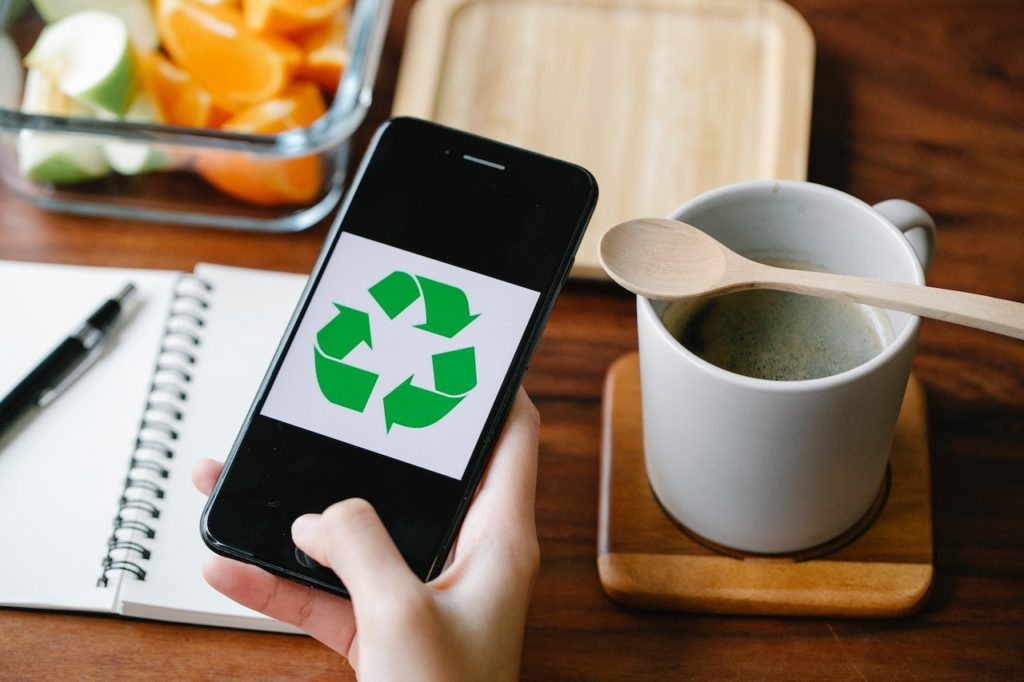Several studies show that the Earth will run out of resources within 27 years if we don’t change how we function and consume resources.
Sustainable living is vital because our daily activities impact the environment, climate, and other species. Sustainable living practices seek to conserve the environment and effectively utilize its resources.
When we conserve our resources, we reduce our carbon footprint and ensure everyone has access to social justice and high quality of life while living in harmony with the natural environment.
What is Sustainable Living?
Sustainable living means making choices that reduce our environmental impact by reducing damage to the environment and decreasing the impacts of climate change.
It is a way to minimize the environmental damage caused by our lifestyle choices by reducing our carbon footprint and better using Earth’s resources.
Also, sustainable living involves making smart decisions today that will benefit the planet tomorrow. We must ensure that the planet is safe and healthy for future generations.
UNICEF views a sustainable world as being devoid of hunger and poverty, a place where everybody has access to education, healthcare, and clean water.
Some Key Stats on Sustainable Living
We live sustainably by being mindful of our household appliances, commute, shopping trips, and more throughout the day.
By doing so, we protect and improve our environment by curbing our spending habits, whether they are financial or energy-related.
Taking into account the finite nature of some resources. Our planet will be exhausted if we continue to consume at unsustainable rates.
We will need almost three planets to supply the natural resources to sustain current lifestyles if the world population reaches 9.6 billion by 2050, according to the UN Environment Programme.
Overfishing, land degradation, and more are threatening the natural resources needed to supply food. Every year, 1.3 billion tons of food are wasted.
As a result of human activity, world freshwater supplies are polluted faster than natural processes can purify them. Excessive water usage contributes to global water shortages.
15 Sustainable Living Tips for a Greener Lifestyle
1. Reduce energy consumption
You can do this in a few simple ways:
-
- Consider switching your bulbs for more energy-efficient ones
-
- Install a smart thermostat to detect and regulate the temperature of your home.
-
- Avoid using the microwave, oven, or stove when possible.
-
- If you are not using lights or plugs, turn them off.
-
- When boiling water in kettles, boil what you need.
-
- Reduce the heat when boiling water and cover pans with lids.
2. Shop with caution
Materials used in manufacturing and pollution emitted during the manufacturing process leave an environmental footprint with every product we purchase.
The upstream damage has already been done, even if a product is recyclable or compostable at the end of its life cycle. Therefore, before buying, ask yourself if it is really necessary.
Buying secondhand instead of new is a good way to reduce your environmental impact, as well as looking for products made with less packaging.
3. Replace plastic with reuse
It is impossible to get rid of plastic. Over 80% of marine debris ends up in the ocean each year, weighing at least 14 million tons. An example is to get eco-friendly toys for your kids.
A great deal of plastic gets ingested by seabirds, sea turtles, seals, and other marine mammals every year, resulting in their deaths.
Here are a few simple steps you can take to reduce your plastic waste:
-
- When shopping, use reusable bags
-
- Stay away from single-use bags, water bottles, and straws
-
- Whenever possible, avoid plastic products or packaging
-
- You can save the planet by switching from single-use products to reusable products whenever you can
4. Consciously travel
Consider walking, biking, or taking public transportation when distances allow. Check if a train can get you to nearby destinations.
Look for airlines that have implemented carbon offsetting when taking to the skies and opt for direct flights if possible.
You can buy your offsets ahead of your trip to ensure that your carbon footprint is reduced, and you can use the funds for a project of your choice. Upon arrival, you can search for eco-friendly accommodations.
5. Buy eco-friendly products
It’d surprise you to learn just how many everyday items aren’t eco-friendly: toilet paper, toothbrushes, cleaning supplies, shampoo containers, and sanitary products are all usually non-recyclable.
The good news is that there are many sustainable beauty products available today — one just needs to do a little research before making a purchase.
It is easy for us to forget that the goods we buy in stores or have delivered to our homes can cause indirect damage.
We also pay for the product’s manufacturer’s daily commute, the transportation of materials, and delivery to our homes or stores when we buy a product.
Products such as those in the beauty industry can cause various environmental problems. Buying only what we need will help offset this.
6. Use water wisely
Due to our growing population and unprecedented droughts, water conservation is critical.
If you want a yard that is drought-tolerant and eco-friendly, consider a landscaping method that uses drought-resistant plants. These plants need less water and provide food and habitat for bees and birds.
Switching from meat and dairy products also saves water since animal agriculture is one of the biggest water hogs.
The following are some easy ways to reduce your water consumption:
-
- Take shorter showers
-
- Choose low-flow and low-water appliances
-
- Flush the toilet less often
-
- You don’t have to do laundry as often
-
- When you brush your teeth, don’t let the water run
-
- Don’t overwater your lawn
-
- When not in use, turn off the tap
-
- Inform your accommodations team/landlord if you find a leak or a dripping tap
7. Compost your waste
Food waste goes to landfills in an astonishing amount every year. According to estimates from the EPA, Americans disposed of 40.7 million tons of waste in 2017.
Food is a major component of the large list of compostable items, which makes that number even more astonishing.
Turn your food waste into something beneficial for the environment instead of sending it to the landfill, where it will decompose anaerobically and produce methane gas.
You can compost even in your apartment if you don’t have a lot of space. If you don’t want to use compostable trash bags, choose biodegradable ones.
8. Buy locally
Buy from local stores rather than shopping online. Before you support something, consider how far it must be shipped.
It is not only good for your local economy and small businesses when you buy locally, but it is also a powerful vote against a world almost choked with shipping emissions.
9. When possible, use public transportation
Driving in a car can save you time and money when you need to run an errand locally, but try walking or cycling when you need to run an errand nearby. Health benefits, cost savings, and pollution reduction are all benefits of it!
10. Go organic
You can reduce your impact on wildlife and the environment by choosing organic products, from coffee to fruit to clothing. In the U.S., pesticide sales exceed two billion pounds a year.
There are hundreds of federally listed species that are threatened by pesticides in their habitats. Besides polluting the air, soil, and water, pesticides contaminate food as well.
By growing organically at home, you can avoid pesticides. Native plants that are pollinator-friendly and invasive species should be removed from your yard to create a wildlife habitat. This will attract beneficial insects and help ward off pests.
In choosing organic, you’re protecting our land and water from harmful pesticides, and you’re protecting farm workers, vulnerable communities, wildlife, and the environment.
11. Avoid fast fashion
In recent years, fast fashion has grown rapidly. We have consumed 400% more fashion globally over the past 20 years, and the number of new garments has nearly doubled.
As much as 10% of the carbon emissions in the world are attributed to the fast fashion industry.
Wool and other animal-based textiles harm wildlife by releasing pollution into the water, causing a significant loss of habitat due to deforestation.
Consider shopping secondhand or joining clothing swaps when you need new clothes so you can slow down your fashion.
Invest in long-lasting brands that use sustainable materials like organic cotton if you must buy new ones. Avoid greenwashing if possible.
12. Make your home green
You can improve your home’s energy efficiency just as you improve your car’s fuel efficiency.
Consider installing adequate insulation in your home, choosing energy-saving windows, and using a programmable thermostat to maximize heating and cooling efficiency.
Also, use energy-saving lightbulbs and choose an electricity supplier that generates at least half of its power from wind, solar, and other renewable sources.
Solar water heating can also save money and help the environment. It is now easier to have green homes for little or no cost in many states.
13. Invest in rechargeable batteries
Do you still have single-use, alkaline batteries in your home? Replace those old batteries with rechargeable ones.
Doing this will save you money over the long term and help the world save billions of dollars each year on batteries that don’t see a recycling facility.
Remember to check regulations and restrictions before dropping off dead batteries in your drawer. Don’t just throw them away!
14. Become a grower
Plant some fruits, vegetables, and herbs of your own. It is a good idea to avoid the grocery store whenever possible to reduce emissions associated with transportation and refrigeration.
It’s okay if you don’t have a backyard. You can grow a variety of foods on your windowsill, such as celery, scallions, and herbs.
15. Act now. Speak up.
Take action by doing the following:
-
- Make efforts to get politically involved in your community and at the national level to protect wildlife and the planet.
-
- Support candidates whose platforms are pro-environment.
-
- Protect wildlife and public lands, limit greenhouse gas emissions, and support access to reproductive health care by urging your representatives to pass stronger policies.
-
- Donate to organizations fighting extinction by voting with your wallet.
-
- Discuss the importance of protecting endangered species and human population growth and overconsumption with friends by signing action alerts, attending events, and sharing them.
What a House Needs to be Sustainable

To ensure sustainable living at home, you’ll need the following items:
-
- Recyclable bottles
It takes hundreds of years for plastic bottles to decompose in our oceans. A simple way to offset the pollution of our oceans is to avoid buying plastic water bottles in the first place.
-
- Reusable bags
Make your life easier by investing in reusable bags, and if you must use plastic bags, you can often recycle them at the store by returning them.
-
- Recyclable coffee cups
Almost all takeaway coffee cups originate from single-use plastics, so the next time you need a caffeine boost, bring your coffee flask. Some coffee shops will even give you a discount if you do!
-
- Clean energy subscriptions
The best way to reduce carbon footprint is to support clean energy initiatives because they don’t release fossil fuels.
Despite the importance of conserving energy at home, using clean energy has the least impact on the environment.
-
- Eco-friendly transportation
For now, we can all be mindful while we wait for electric cars to become more affordable. When buying a new car, consider hybrids and electrics.
Also, consider walking to the store if the weather is nice, especially if it is nearby. Making better decisions for our planet requires a little extra thought.
Final Thoughts on Sustainable Living
It takes a conscious decision to switch to sustainable living. All hands must be on deck – both governments and big corporations. We all can make a real difference by living more sustainably.
One area to ensure sustainable living is through energy usage. We can increase the demand for clean, sustainable energy on the grid with the help of clean energy utility providers.
The best way to make sure your energy is affordable, reliable, and environmentally responsible is to choose a service that won’t disappoint.
FAQs on Sustainable Living
What should we care about sustainable living?
There are limited natural resources, and the world’s population is constantly expanding, making sustainable living imperative. Our ways need to change if we wish to keep our planet as we know it.
What threatens agricultural sustainability?
The biggest threat to agricultural sustainability is water insecurity. Food production is impossible without it since water is a key component of food production.
The risk of erosion is another factor that threatens the sustainability of agriculture. Increasing food production, deforestation, and climate change have all contributed to soil erosion.
What are the three pillars of sustainability?
A sustainable economy must be economically viable, environmentally safe, and socially equitable. We, however, view sustainability differently.
An ecologist, for instance, doesn’t separate humans from nature. We should protect both nature and human beings equally.
Alternatively, environmentalists separate nature from humans. Humans should preserve the planet so that it can serve them.
Lastly, the economist believes that technology will solve problems during times of crisis despite factors such as consumerism and using limited resources as income.
What is the difference between sustainable living and green living?
Living green means using products and services that are environmentally friendly. Sustainable living, however, is about using products or services without destroying the planet or depleting future generations of resources.
The major difference between green living and sustainable living is that green has a single element, whereas sustainability has impacts on the economy, society, and the environment.
What is the role of ethical responsibility in sustainable living?
To be ethically responsible, we must also be environmentally sustainable. To ensure the survival of future generations, we have a moral obligation not to endanger other living beings and deplete natural resources.
We can protect the planet by changing our routines in a significant way, according to these sustainability statistics.







